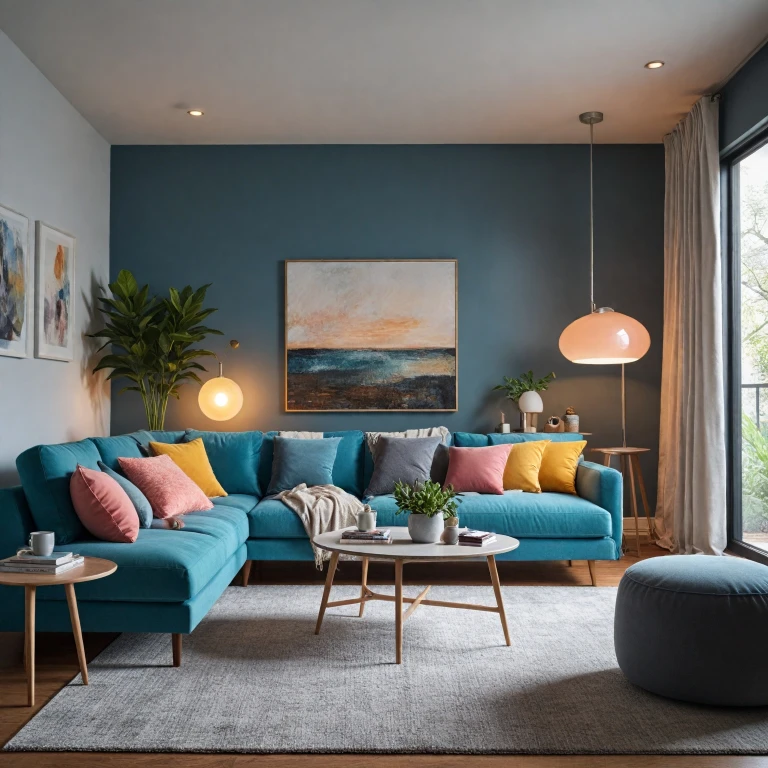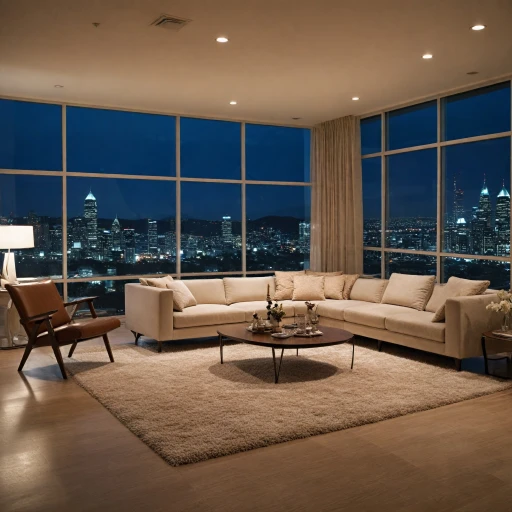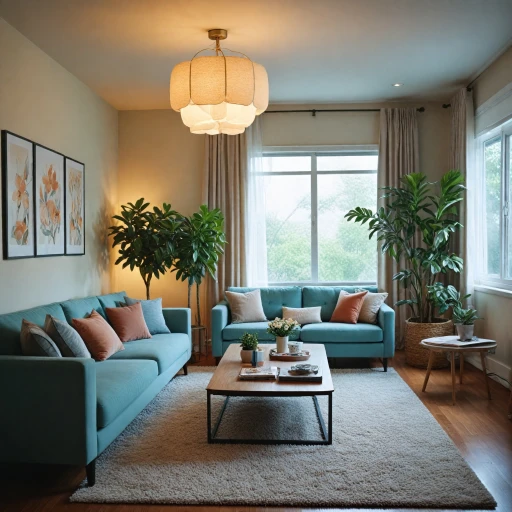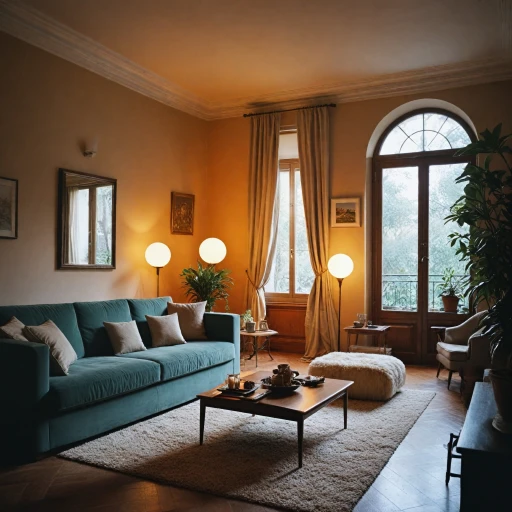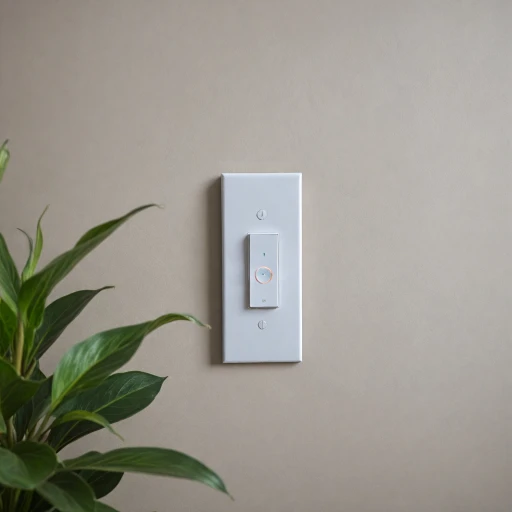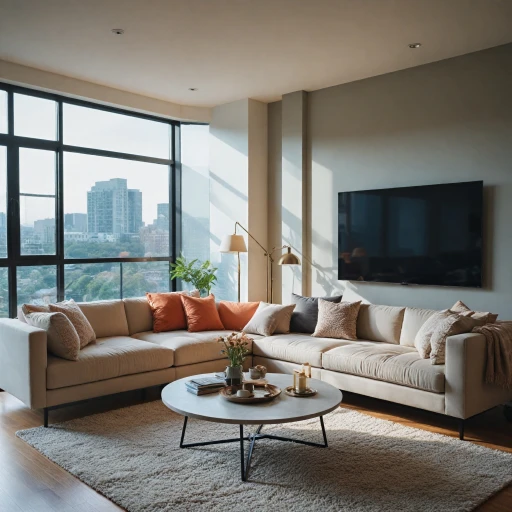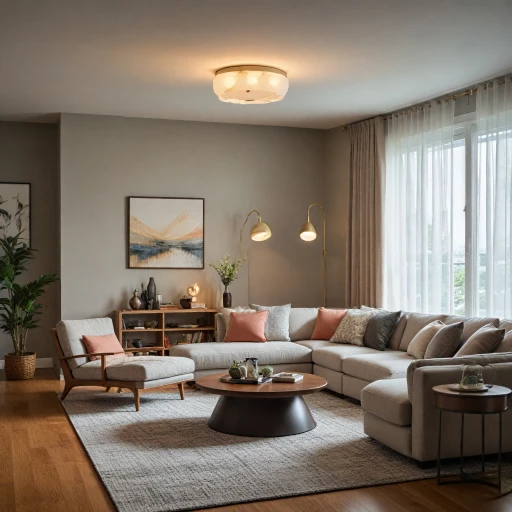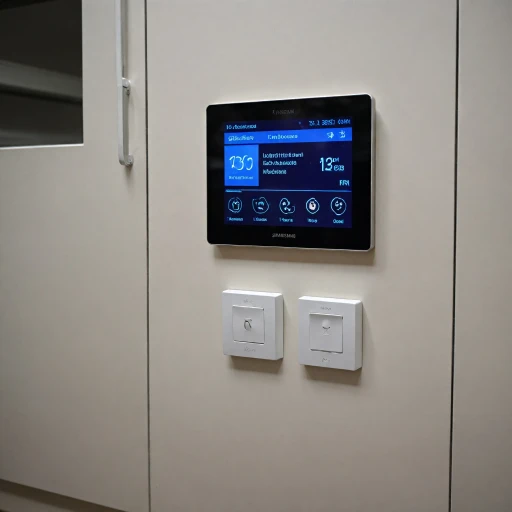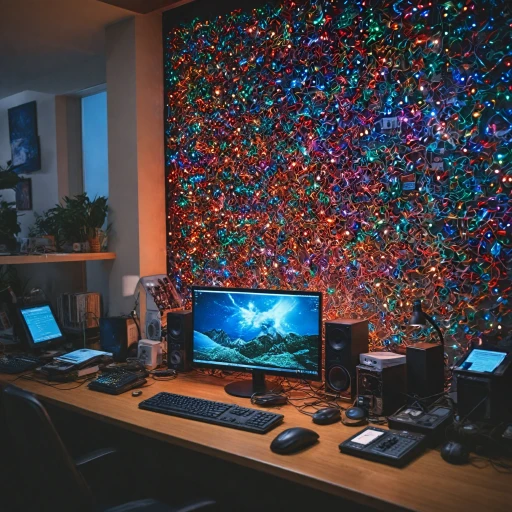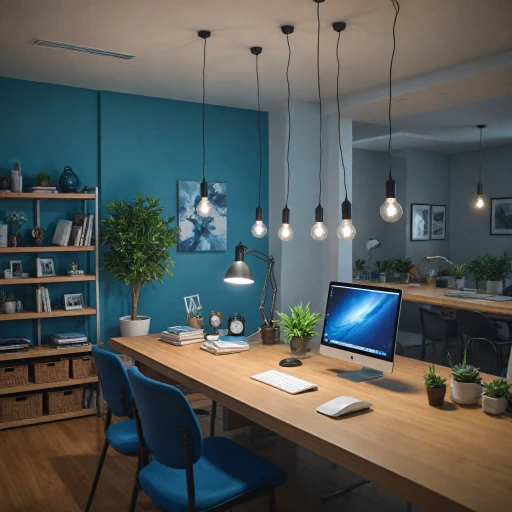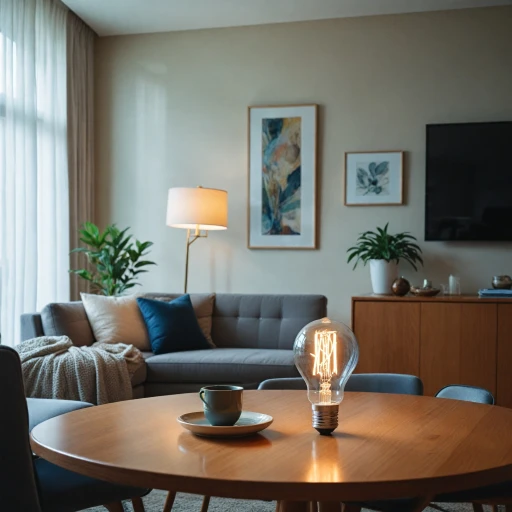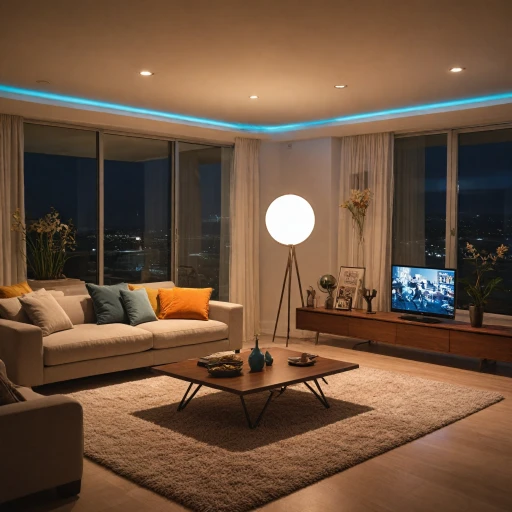
Understanding Bluetooth LED Lamps
Introduction to Bluetooth LED Lamps and Their Role in Modern Lighting
Bluetooth LED lamps have become a fascinating component in the realm of smart lighting. These innovative devices offer a transformative experience for your home lighting needs, providing flexibility, efficiency, and smart control—all at your fingertips. Whether you're looking to set the mood with color-changing capabilities or simply enhance the brightness of a room with cls white light, Bluetooth LED lamps provide functionality and style.What Sets Bluetooth LED Lamps Apart?
Bluetooth LED lamps stand out due to their seamless integration with smart home systems, enabling control via popular voice assistants like Alexa or Google Assistant using a simple command. The integration with smart apps available on platforms such as Amazon allows you to customize your lighting experience like never before. From adjusting the lumens for perfect lighting ambiance to synchronizing lights with your daily schedule, these lamps are designed to fit your needs.Features that Elevate Your Lighting Experience
- Versatile Control: With the advent of smart bulb apps, you can manage and control your lighting effortlessly, adjusting settings such as brightness and hue with ease.
- Energy Efficiency: LED technology in these lights ensures minimal power consumption and longer lifespan than traditional bulbs, translating to significant cost savings.
- Wide Range of Color Options: Full color lighting capabilities allow you to switch from a warm white light to a vibrant hue, adapting to your mood or activity.
Benefits of Bluetooth LED Lamps
The Advantages of Bluetooth LED Lamps in Your Home
- Wireless Control: Bluetooth LED lamps provide the convenience of controlling your lighting directly from your smartphone or tablet. With the use of an app, such as those available on platforms like Amazon, you can easily adjust brightness, color, and even set timers, creating a truly personalized lighting experience in any room.
- Flexible Color and Brightness Options: These smart lights offer a full color spectrum, including the ability to switch between warm and cool white light. You can personalize your space with color changing capabilities, setting the perfect mood for any occasion.
- No Hub Required: Unlike other smart lighting systems such as those using a hue bridge, Bluetooth LED bulbs do not require a bridge or central hub, simplifying installation and reducing setup costs. This makes it an attractive option for those looking to dip their toes into smart lighting without a significant investment.
- Compatibility with Voice Assistants: Many Bluetooth LED lamps are compatible with popular voice assistants, including Amazon Alexa and Google Assistant, allowing for hands-free control and seamless integration into your smart home ecosystem.
- Energy Efficient: These LEDs not only deliver excellent lighting performance with high lumens output, but they also offer significant energy savings over traditional bulbs, helping to lower your electricity bills.
For more detailed insights into how these lighting solutions can transform your living spaces, consider reading this informative piece on enhancing your home with Bluetooth lighting.
Installation and Setup Tips
Getting Started with Bluetooth LED Lights
Bluetooth LED bulbs and strip lights offer an excellent way to upgrade your home's ambiance while keeping installation relatively straightforward. Here's how to ensure you're setting up your smart lights effectively:
- Unbox and Examine: First, carefully unbox your Bluetooth LED lighting products, such as bulbs or strips. Check for any accessories, such as remote controls, that may be included.
- Choose the Right Location: Decide where you'd like to install your smart bulbs or strips. Whether it's for ambient lighting in a room or functional lighting in a workspace, the placement will impact the effectiveness and aesthetics of your setup.
- Replace Existing Bulbs: If you're upgrading existing lighting, simply swap out old bulbs with your new smart LED bulbs. Ensure that your new bulbs are compatible with the light fixtures in your home, checking for base type and wattage compatibility.
- Set Up the LED Strip: For LED strips, measure the desired area to ensure proper length. Most strips come with adhesive backing, allowing you to simply peel and stick the strip onto a clean, dry surface for easy installation.
- Pair with Bluetooth Devices: Open the app associated with your Bluetooth LED lights and follow the instructions for pairing with your smartphone or another Bluetooth-capable device. Ensure Bluetooth is enabled on your device for a smooth connection.
- Customize Your Lighting: Use the app to adjust colors and brightness. With these controls, you can create the perfect hue and lighting mood for any occasion, even integrating voice commands if compatible with Alexa or Google Assistant.
- Integrate with Other Smart Devices: Although Bluetooth smart lights often don’t require a hub like the Hue Bridge, they can still work alongside other smart home systems for more comprehensive control.
For further insights on optimizing your smart lighting system, consider exploring the benefits of a smart electrical panel. This can enhance energy management and improve the efficiency of your smart LED setup.
Energy Efficiency and Cost Savings
Maximizing Efficiency with Smart Lighting
When it comes to energy efficiency, Bluetooth LED lamps stand out as a smart choice for modern homes. These smart bulbs are designed to consume less power while providing optimal lighting, making them an excellent investment for both your wallet and the environment.
One of the main advantages of using LED lights is their ability to produce more lumens per watt compared to traditional incandescent bulbs. This means you get brighter light output without a significant increase in energy consumption. Whether you're using a single smart bulb or a full color LED strip, the energy savings can be substantial over time.
Moreover, Bluetooth LED lamps often come with features that allow you to control the intensity and color of the light. This not only enhances the ambiance of your room but also contributes to energy savings. For instance, dimming the lights when full brightness isn't necessary can reduce power usage significantly.
Cost-Effective Lighting Solutions
While the initial price of smart LED bulbs might be higher than traditional bulbs, the long-term savings on your electricity bill can offset this cost. Smart lights are designed to last longer, reducing the frequency of replacements. Additionally, many options available on platforms like Amazon offer competitive pricing, making it easier to find the best fit for your budget.
Integrating your Bluetooth LED lamps with smart home systems like Alexa or Google Assistant can further enhance their cost-effectiveness. By automating your lighting schedule, you can ensure that lights are only on when needed, preventing unnecessary energy consumption.
In conclusion, investing in Bluetooth LED lighting not only enhances your home's aesthetic appeal but also provides a practical solution for reducing energy costs. Whether you're using a Philips Hue bulb or a generic LED strip, the benefits of smart lighting are clear.
Integration with Smart Home Systems
Seamlessly Connecting Your Smart LED Bulbs to Your Smart Home Ecosystem
Integrating Bluetooth LED lamps into your smart home system can elevate your lighting experience to a new level of convenience and sophistication. With advancements in smart technology, it’s easier than ever to establish a cohesive and intuitive lighting system that works in harmony with other home automation devices.- Compatibility is Key: Ensure that your Bluetooth LED lamps are compatible with devices like Amazon Alexa and Google Assistant. This compatibility enables voice control and can significantly enhance the ease of managing your lighting.
- Hub and Bridge Considerations: While many Bluetooth LED lights operate without a hub, integrating a Philips Hue Bridge can offer more control and features, especially for color changing and synchronized lighting experiences. Consider the hue and hue bridge systems to maximize your set-up.
- App Connections: Most smart lights come with an accompanying app that allows for easy setup and control. Whether you’re adjusting lumens or setting a schedule, having everything accessible from your smartphone or tablet provides a user-friendly interface.
- Integration with Other Smart Devices: If you have a room filled with smart tech, such as smart speakers or thermostats, linking your LED bulbs can create a seamless environment. Adjusting the mood with LED strip lights or changing your bulbs to full color becomes a synchronized part of your smart home routine.
Troubleshooting Common Issues
Addressing Common Bluetooth LED Light Challenges
Integrating Bluetooth LED lamps into your home can significantly improve your lighting experience. However, just like any technology, you might encounter some challenges. Understanding how to troubleshoot these can help you maximize the potential of your smart bulbs and Bluetooth lighting setup.
- Connectivity Issues: One frequent issue is the lamp not connecting to your smart device. Ensure the device’s Bluetooth is enabled and within range. Sometimes, interference from other devices can cause connectivity problems, so reducing nearby electronic clutter might help.
- Light Bulb Not Responding to Control: If you've set a specific color hue or brightness in your app and the bulb isn't responding, check if your app is updated. Compatibility issues might arise if using older versions. Restarting the bulb or app can often resolve such glitches.
- App Malfunctions: Apps used to control your smart lights may occasionally malfunction. A reliable solution is to clear the app’s cache or reinstall it. Ensure your smartphone or device’s operating system is also updated.
- Inconsistent Light Performance: If your strip lights or LEDs flicker or produce unexpected color changes, ensure your bulbs have suitable power sources and are installed correctly. Double-check connections with the hue bridge or other smart home systems.
- Difficulty in Dimming: Some LED lights might not dim as expected. This often stems from compatibility issues with traditional dimming switches, so it's best to use compatible dimming controls specified by manufacturers.
While these issues can occasionally arise, having a foundational understanding of your smart lighting system will equip you to resolve them promptly. For any persistent issues, consulting the manufacturer’s guidelines or customer support could offer more specific solutions. Investing time in understanding these common problems will ensure your lighting system around your home functions smoothly and efficiently.
